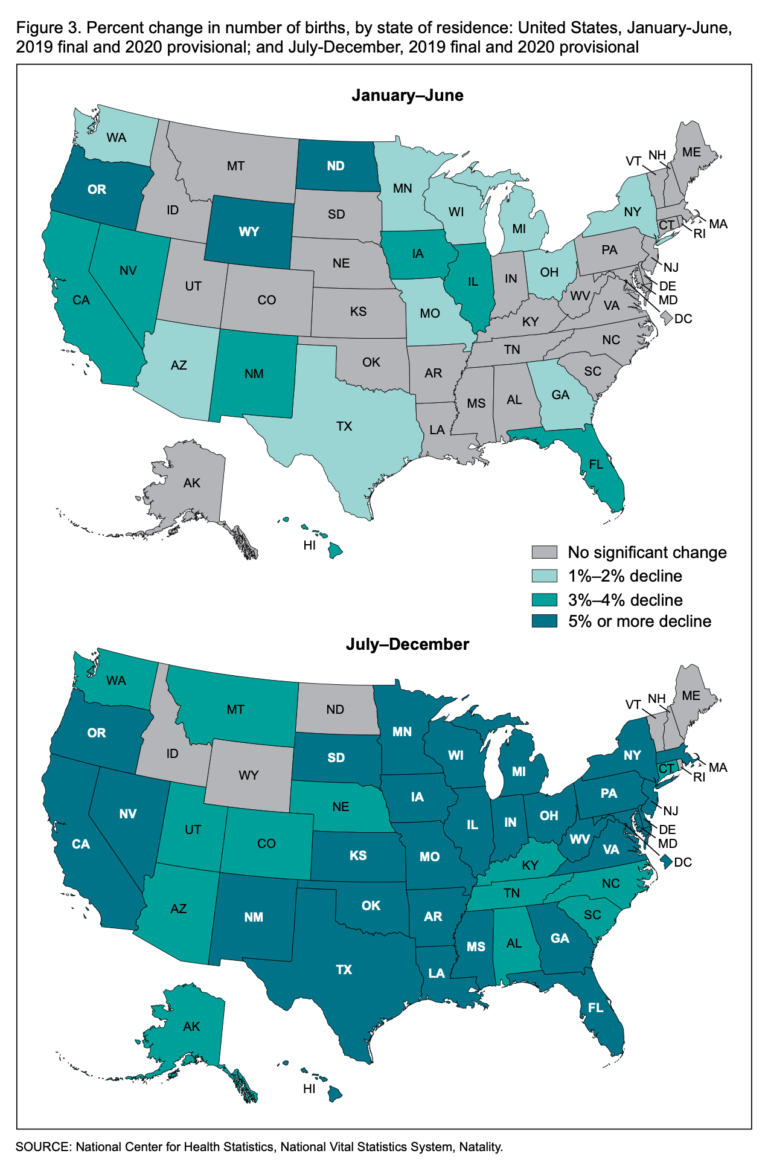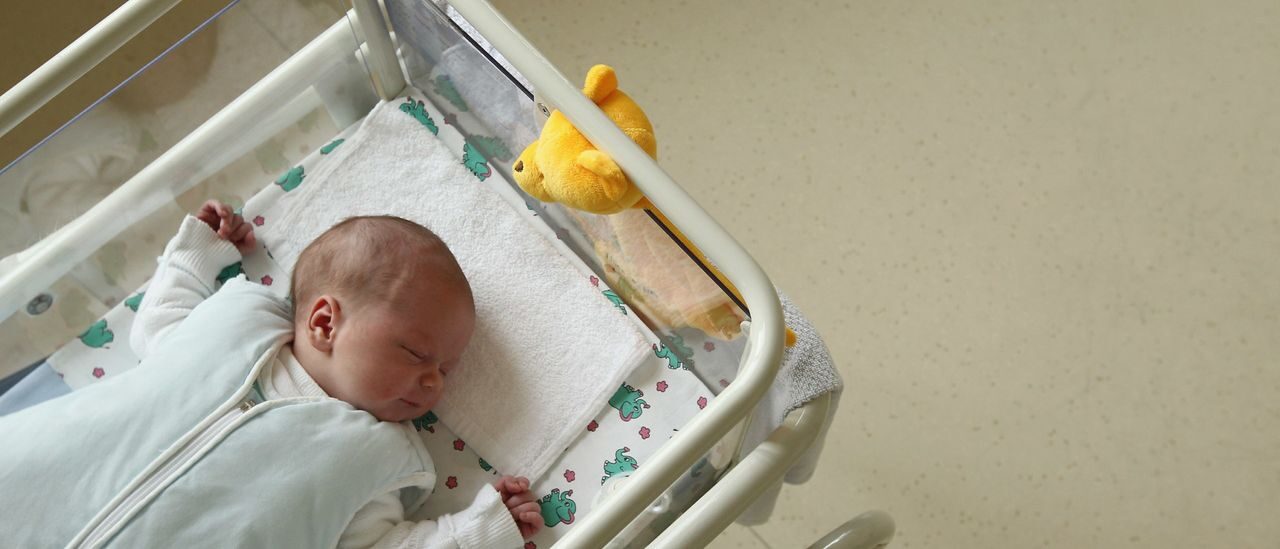The rate of decrease accelerated towards the end of the year, with the second half of 2020 seeing a 6 percent decline in births compared to the second half of 2019, indicating that the pandemic suppressed birth rates, the report said.
Births in the U.S. have declined at about a 2% rate annually since their 2007 peak, and the trend continued in the first half of 2020 when the impact of the pandemic was relatively limited, the report found.
New Mexico saw the largest drop in births in the second half of 2020 with an 11 percent drop, followed by New York (9 percent), and California, Hawaii, and West Virginia (8 percent), the report said. Births declined in all states during this period, with 43 states seeing statistically significant declines.

This decline in fertility has been a global trend, with Europe and East Asia seeing even lower levels than the U.S. The most recent national census in China found that their total fertility rate dropped to 1.3 in 2020, among the lowest in the world.
A June study published in JAMA Network Open found that University of Michigan medical records, which predicted the birth rate drop early in the pandemic, anticipate a surge in births in the summer of 2021.




Comment: See also: